Total solar eclipse 1 August 2008 - report
01 August 2008. Total solar eclipse.
Location: long. 82°57'E; latit. 54°56'N;
Site: NOVOSIBIRSK; Country:RUSSIA
Observer: MASLOV MIKHAIL;
Maximum phase: 103.9%
Maximum obscurance: 100.0%
Maximum drop in brightness: totally eclipsed Sun.
Main events (Sun altitude, degrees), l.t. (UT+7h):
Partial eclipse begins: 16:41:18 (38.8)
Total eclipse begins: 17:43:59 (30.3)
Total eclipse reaches max. phase: 17:45:11 (30.2)
Total eclipse ends: 17:46:21 (30.0)
Partial eclipse ends: 18:45:08 (21.6)
Eclipse duration: 01:57:29
Total eclipse duration: 00:02:22
Russia. Novosibirsk. The next solar eclipse after the event on 19 March 2007 (which I effectively didn't observe because of clouds) became the total solar eclipse on 1 August 2008. On a whole, the beginning of August in Novosibirsk is characterised by quite clear and stable weather. Nevertheless the first half of the day of 1 August 2008 turned to be fairly bad, with predominant clouds and strong winds. However by the time of approximately two hours before the eclipse beginning convective clouds forming the overcast started dissipating. On other hand, the wing became even stronger. As a result, by the beginning of the eclipse the cloud coverade diminished to appr. 30%, it consisted of swiftly moving cumuli. Several minutes before the first contact the Sun hid behind quite large and dense cloud. I started to worry about possible missing of the first contacle but the Sun appeared again literaly several seconds before it. The first contact was videoed through my scope. Some probled were caused by wind gusts which shaked the scope and the taken picture therefore. The Moon meanwhile started crawling the Sun, whereas I was taking shots through some periods of time, fixing the growing eclipse phase. The clouds continued dissipating and were already making almost no troubles in taking photos. The first signs of darkening were noted with the phase of appr. 40%. Then, as usual, the shades started getting more and more sharp. After the phase of 80% the lightning fell to the level of twilight. After 90% the process of darkening become notable, the north-eastern part of the sky was also darkened, as the moon shadow was to come from there. The Sun looked like a narrow sickle with horns directed to the North. The closer the total phase was, the faster darkening was going on. Finally almost the whole solar disk hid behind the Moon, only a very narrow sickle was visible. The solar crown started to appear. Several seconds later "brilliat ring" became visible for a short time. Another several seconds, and the total phase began. In my opinion, one of the most spectacular aspects of total solar eclipse is that sequence of swift and dramatic transformations happening to the Sun and to the neighbouring environment just before the total phase (and after it right away)... Unfortinately, I wasn't standing on the height and couldn't observe the movement of lunar shadow on the Earth's surface, as its velocity (about 600 m/s) would allow to do this. The crown was shining around the eclipsed Sun. It wasn't very elongated along the solar equator as, unfortunately, 1 August 2008 eclipse happened virtually in the very minimum of the 11-year solar activity cycle (that was also the cause for absence of spots on the Sun, it is quite interesting to watch how they are gradually covered by the Moon). Still, I could see at least one "ray" going from the left edge of the Sun. Among four planets (Mercury, Venus, Saturn and Mars) forming a row to the left of the Sun along the ecliptics only Mercury and Venus were distinctly visible. The dawning ring was visible along all the horizon, it designated the borders of lunar shadow. The rare clouds at the horizon were sunlit. I should note that by the time of total phase the clouds almost dissipated. However, after the totality began one of the delaed clouds began closing the Sun, it was threatening to spoil the end of totality. But that didn't happened, this cloud was also dissipating. I noted how the "mass center" of lunar shadow moved from the north-west to the south-east and the sky got brignter a bit. It was evident that total phase was finishing. Suddenly the brilliant ring lit up again, on the right side of the Sun this time. Solar crown began rapidly vanishing, solar light appeared and was quickly strengthening. The planets, Vinus especially, were still visible up to two minutes after the end of totality. Then the events were occuring in the reverse order comparing to the first partial phase. The day was returning, though the more exact word would be "evening" as the Sun already came down to the altitudes of 25-20°. The clouds were virtually absent, the wind also got weaker to some degree, so the last contact was taken on video in better conditions, though the scope was still shaking a bit. On the following days the sky was again predominatly cloudy, there weren't such clearings as in the second half of the 1 August 2008, so I can say I was lucky with the weather. On other hand, the clouds didn't effectively allow me to observe the partial lunar eclipse on 17 August. The single appearance of the Moon from behinf the clouds (for several minutes) happened during the first penumpral phase, when the lunar disk only had a little darkening on its right edge. Then the Moon hid behind the clouds again, so this eclipse turned to be virtually missed by me.
Eclipse shots:
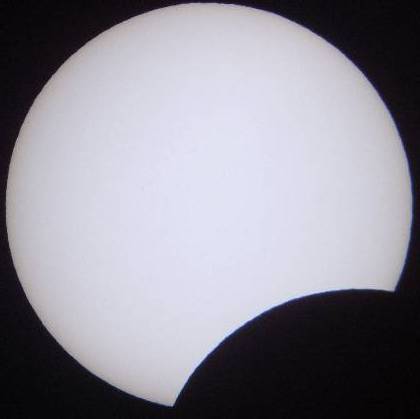
1 August 2008 09:54 UT

1 August 2008 10:00 UT (contains an occasianally caught bird silhoutte)

1 August 2008 10:10 UT
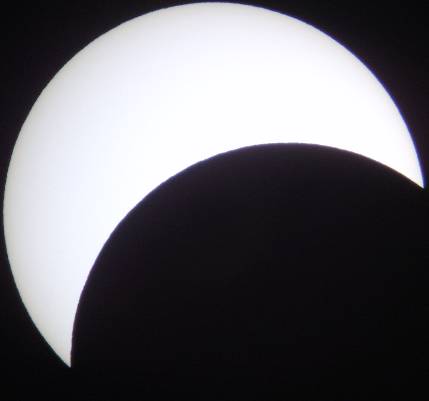
1 August 2008 10:20 UT
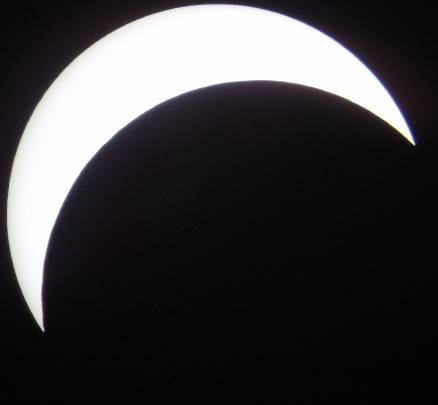
1 August 2008 10:31 UT
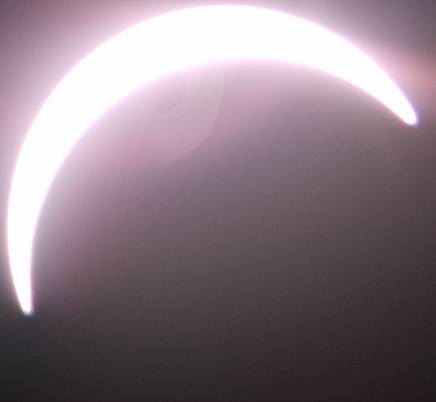
1 August 2008 10:38 UT

1 August 2008 10:54 UT
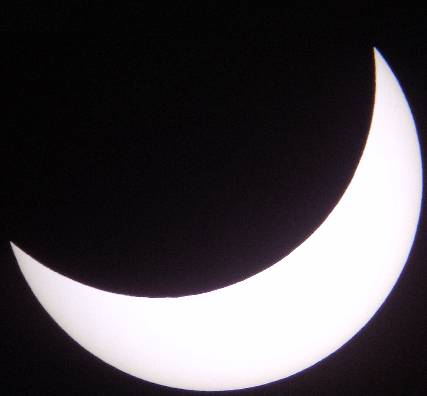
1 August 2008 11:01 UT

1 August 2008 11:10 UT

1 August 2008 11:21 UT
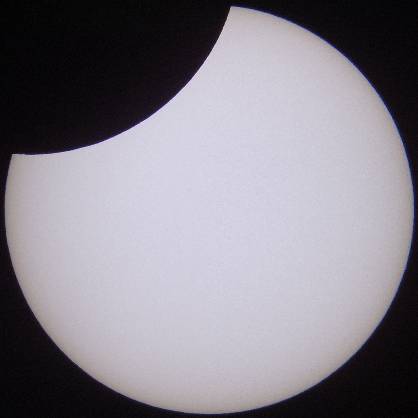
1 August 2008 11:31 UT
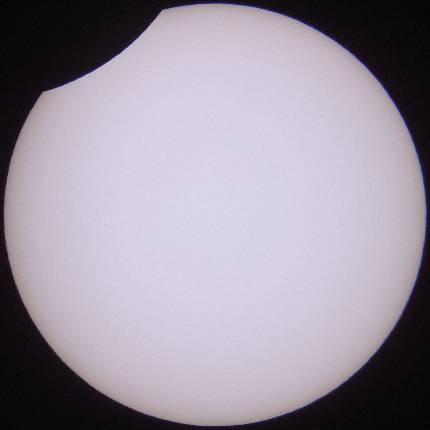
1 August 2008 11:41 UT